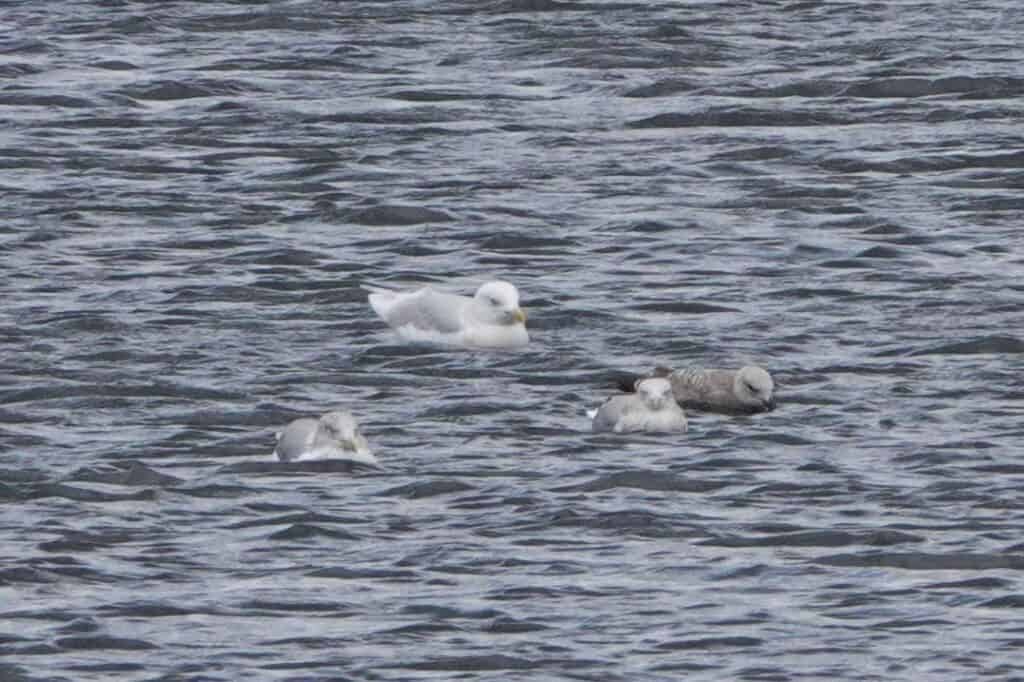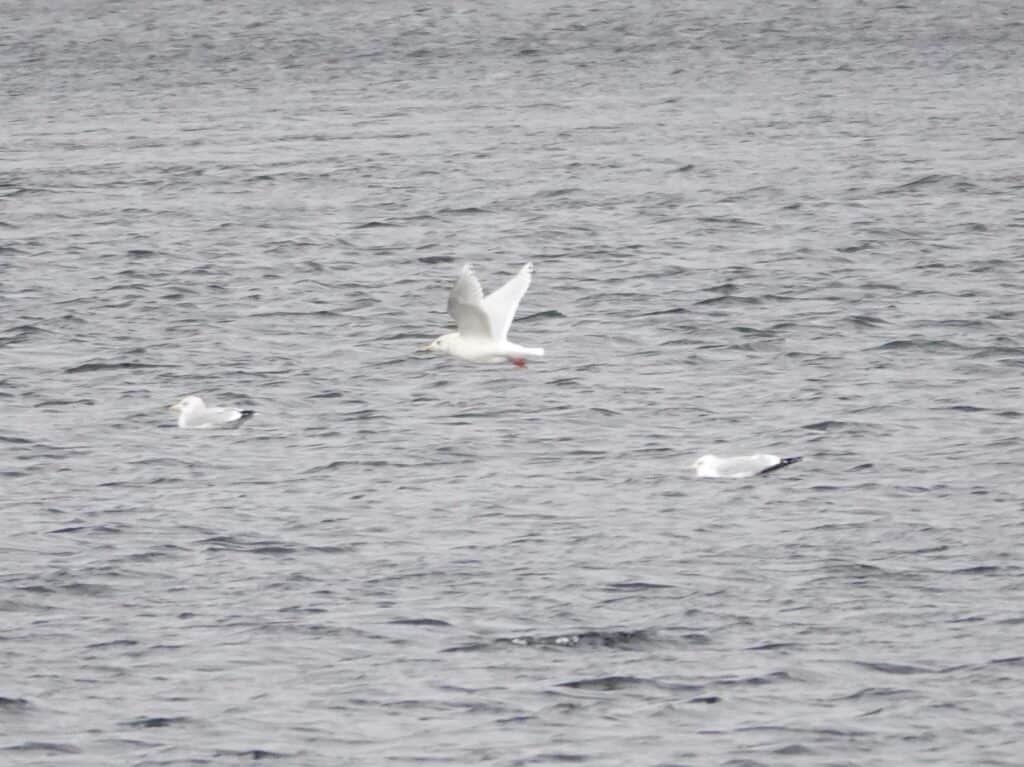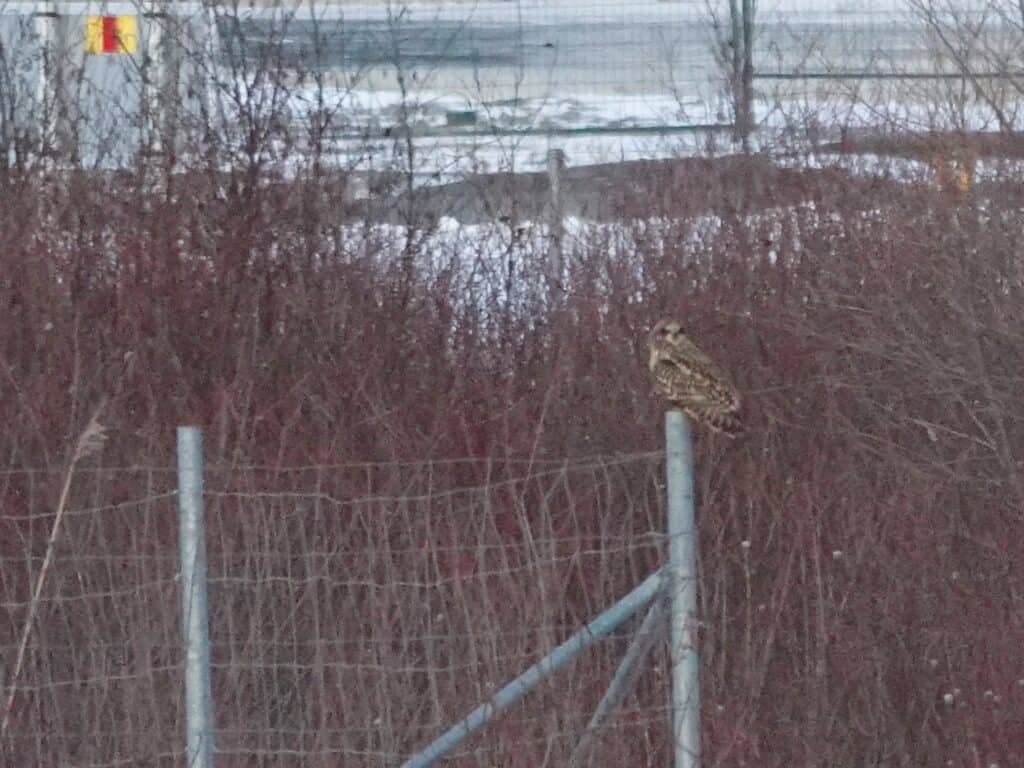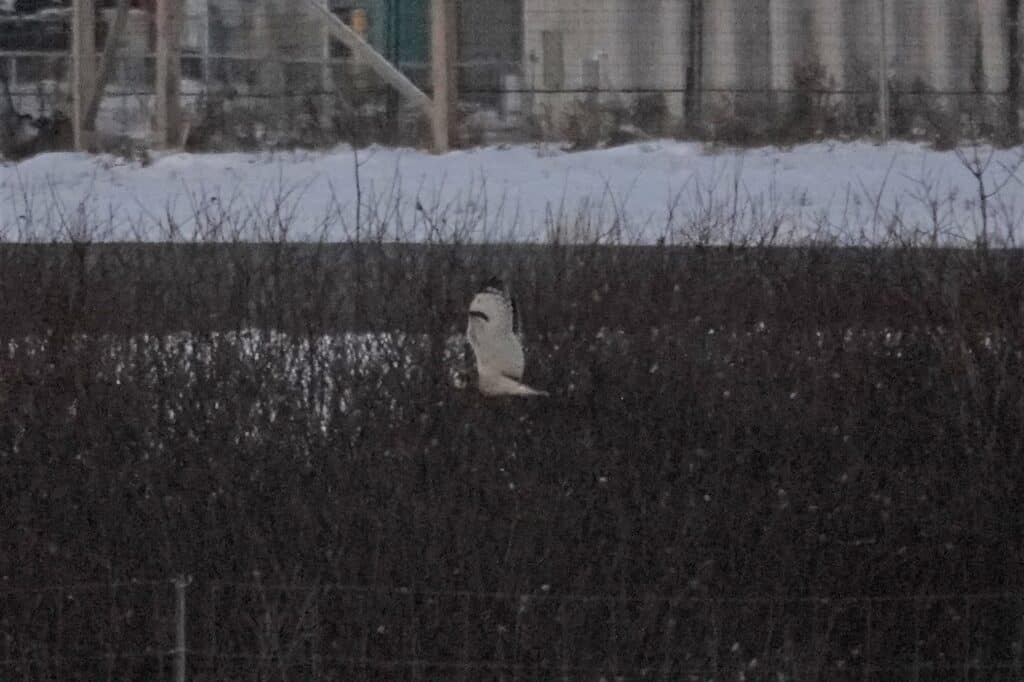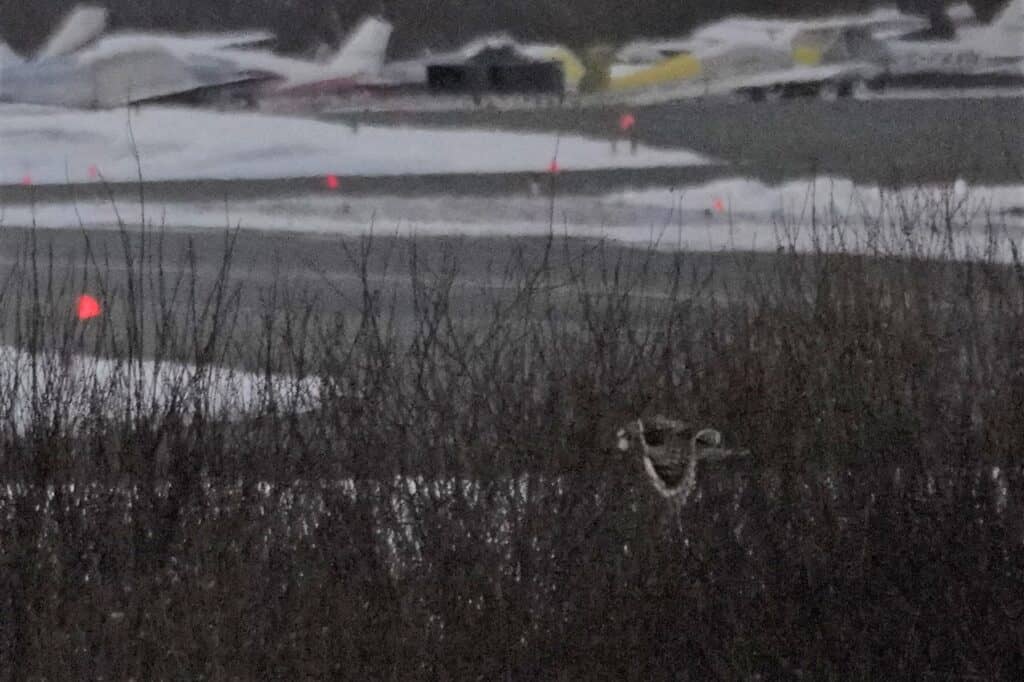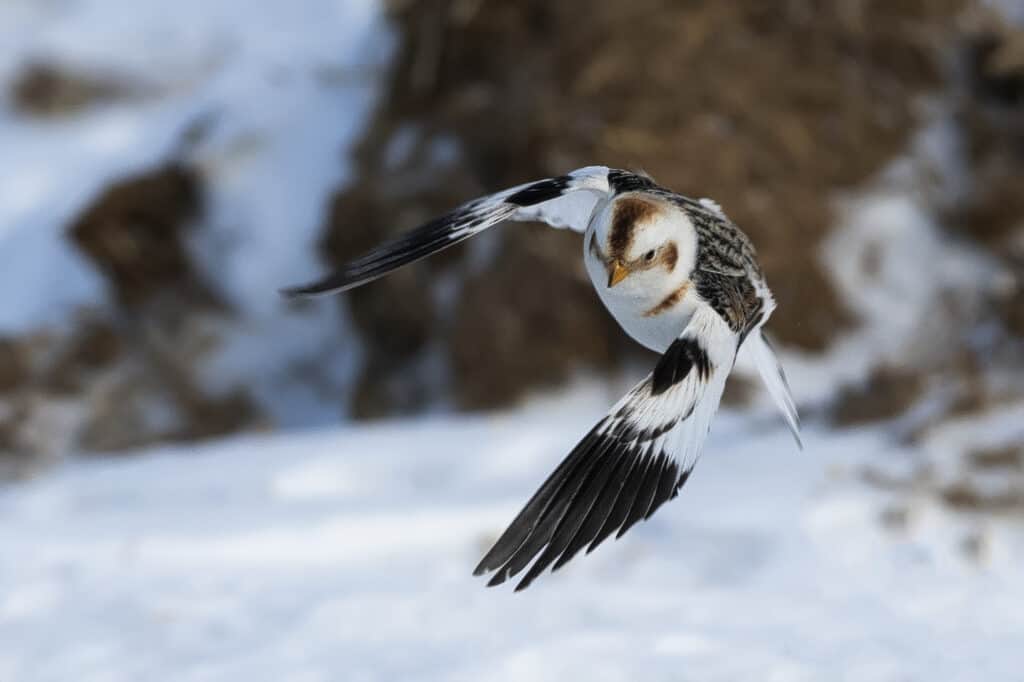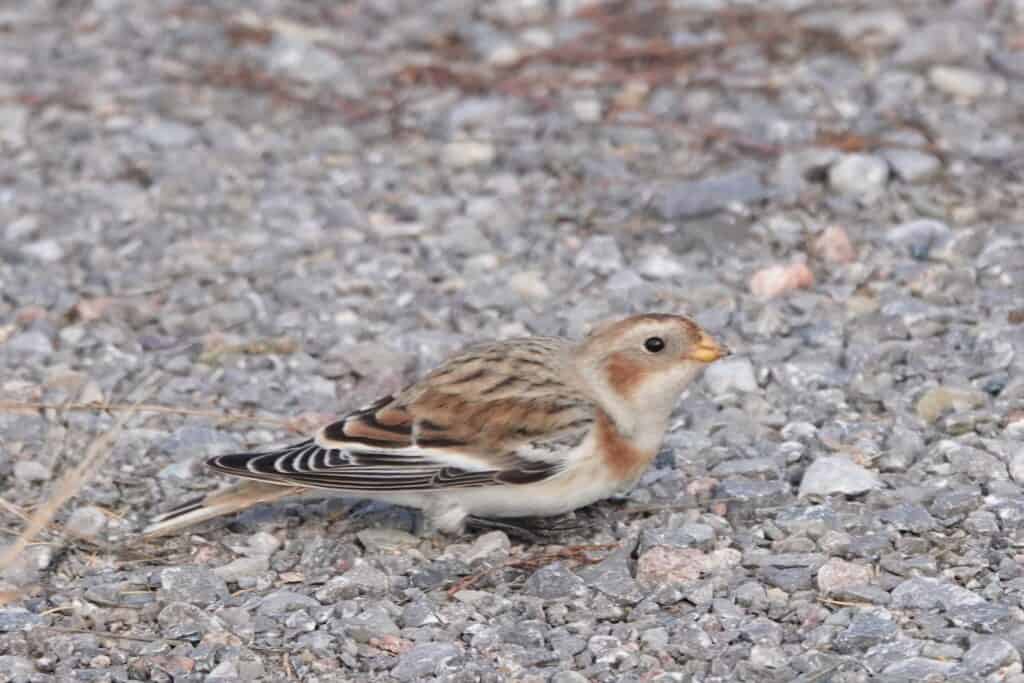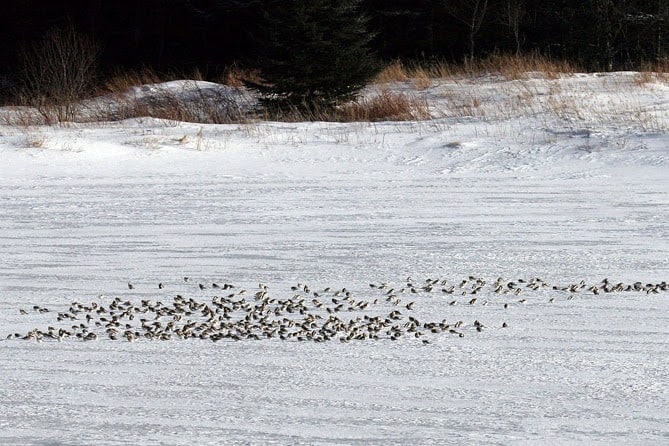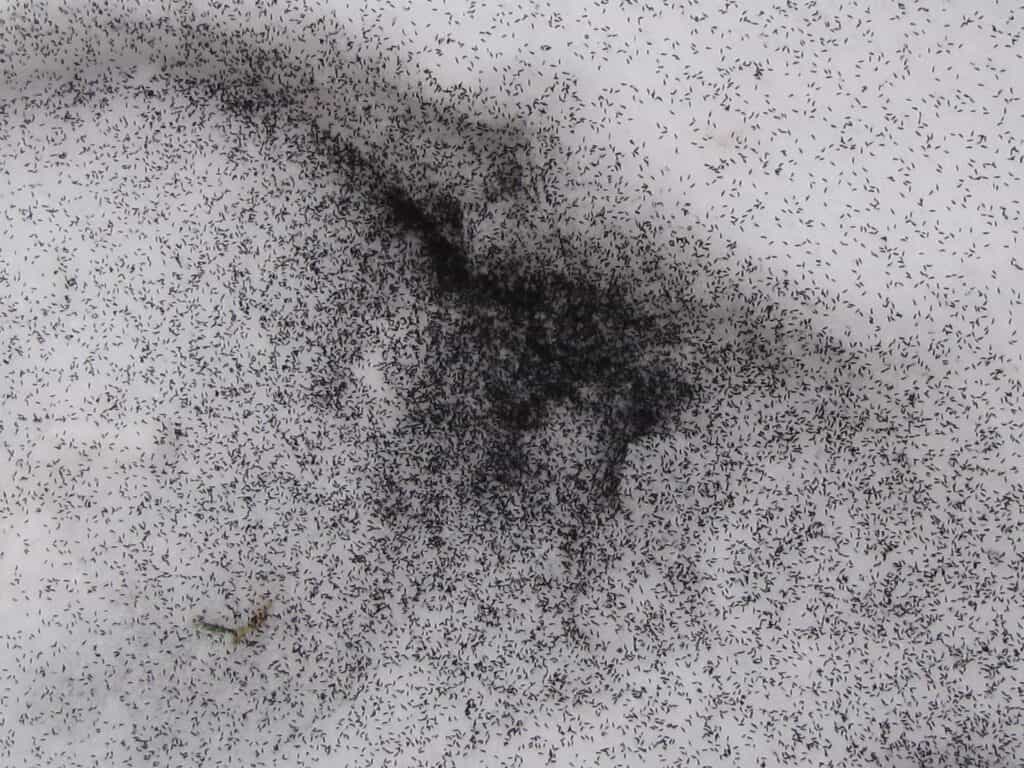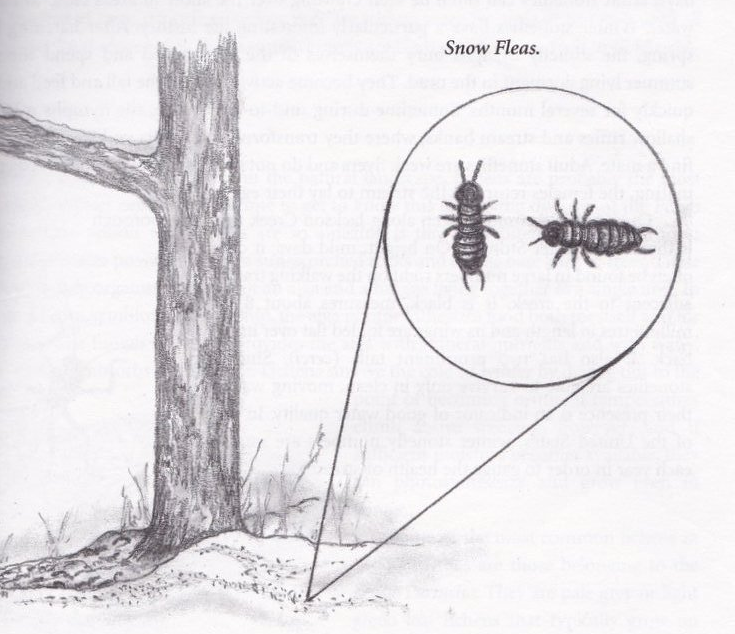Looking ahead to events in nature as the seasons change
As I wrote earlier this fall, I’ve been on a quest to see how many bird species I can find in a single calendar year in Peterborough County. On November 8, I tallied number 200, thanks to a surf scoter at Sandy Point on Pigeon Lake. Well, over the past month and a half, this adventure has continued. I’ve been able to add (in chronological order) black scoter, cackling goose, pine grosbeak, northern shrike, gadwall, canvasback, little gull, golden eagle, snow goose, tundra swan, great black-backed gull, hoary redpoll, glaucous gull, short-eared owl, lesser black-backed gull, and Iceland gull.
The biggest thrill was seeing the short-eared owl. In fact, there were three of them. I found these beautiful birds at the Peterborough Airport on December 2 and couldn’t believe my luck. This is a species that rarely turns up in the Kawarthas. These owls are wonderful to watch as they fly with a buoyant, moth-like quality.
I’m now at 216 species and hope to reach 220 – for no other reason than this number almost matches the digits in the year! So, four to go and only two weeks left. The most likely species that could get me to my goal are snowy owl, red crossbill, Lapland longspur, and northern goshawk. With the exception of the snowy owl, all of these birds are being seen right now in the County but aren’t easy to find.
In addition to being a lot of fun, this crazy endeavour has given me a far better sense of what birds are around when in the County and where to find them. I now have a better sense of the plethora of duck species that show up on Pigeon Lake during migration and the wide diversity of gulls on Little Lake in late fall. Finally, I’ve come to realize that many species are far more common that I’d thought initially. Least bittern and red-breasted merganser are two examples that come to mind.
Looking ahead to the coming weeks, here is a list of events in nature that are typical of winter in the Kawarthas – a winter that once again is projected to be milder than usual with a strong possibility of record warm days in January and February.
DECEMBER
- Between mid-December and early January, Christmas Bird Counts take place across North and Central America. The Peterborough will be held on Sunday, December 20. Anyone with an interest in birds is welcome to participate. Contact Martin Parker at 705-745-4750.
- December 21 marks the winter solstice, as the sun rises and sets at its southernmost points on the horizon. Sunrise is not until 7:46 am, while sunset is upon us by 4:37 pm. This translates into only eight hours and 51 minutes of daylight.
- The next week offers a special celestial treat. From December 16-25, look to the west in the evening sky to see a “great conjunction”. Jupiter and Saturn will be separated by less than a full-moon diameter. Jupiter will appear largest and brightest. On December 21, the pair will be only 0.1 degrees apart. If you look through a small telescope with even 25X magnification, you’ll be able to see Saturn’s rings and several of Jupiter’s moons.
JANUARY
- Coyotes are quite vocal during their January to March mating season. They can often be heard right in the city, such as in the vicinity of the Kawartha Golf and Country Club.
- Throughout the late fall and winter, eastern gray squirrels (most of which are black in our area) are often seen high up in maples, where they dine on the keys.
- In our woodlots, mixed flocks of foraging chickadees, nuthatches and woodpeckers bring life to the seemingly empty winter landscape. These birds are very receptive to pishing and can usually be coaxed to come in quite close.
- The Winter Six and their assortment of bright stars light up January evenings. Look for the constellations Orion, Taurus, Gemini, Auriga, Canis Major and Canis Minor.
- Watch for ruffed grouse at dawn and dusk along tree-lined country roads. They often appear in silhouette as they feed on the buds of trees such as the trembling aspen.
- When you’re driving through open farm country, keep an eye open for huge, swirling flocks of snow buntings. It is not uncommon to see hundreds of these white birds in a single flock.
- If you’re up late on January 28, take a glance outside at the full moon. The early-winter moon rides higher in the sky than at any other season and passes nearly overhead at midnight. Moonlit winter nights shine with an unforgettable brilliance. The Ojibway called the moon of January the Spirit Moon.
FEBRUARY
- We begin the month with about 9 ¾ hours of daylight and end with 11, a gain of about 75 minutes. The lengthening days are most notable in the afternoon.
- Groundhog Day, February 2, marks the mid-point of winter. However, our groundhogs won’t see their shadow – or light of day, for that matter – until mid-March at the earliest. In case you were wondering, no animal or plant behaviour can portend upcoming weather beyond a few hours.
- Being social animals, northern flying squirrels sometimes join up in single-sex groups for warmth during the winter. They will often huddle together in a tree cavity. Flying squirrels sometimes turn up at bird feeders, as well.
- Bird song returns in February as pair bonds are established or renewed. Black-capped chickadees, northern cardinals, house finches, and white-breasted nuthatches are several of the birds that usually start singing this month.
- Gray squirrels mate in January or February and can often be seen streaming by in treetop chases as a group of males pursues a half-terrorized female.
- The Great Backyard Bird Count takes place Friday, February 12, through Monday, February 15. Anyone can participate. You can count for as little as 15 minutes on a single day, or for as long as you like each day. This is a great event for kids. Go to https://www.birdcount.org/ for details.
- With mating season starting, red foxes become more active. It’s quite common to spot their straight-lined trails, even in suburban backyards. Occasionally we see foxes hunting for squirrels, mice and voles at dusk or dawn.
- If you are walking through a snow-covered field or along a roadside, watch for a ball-like gall growing on the stems of goldenrods. It contains the tiny, white larva of the goldenrod gall fly and is a favourite food of downy woodpeckers and chickadees.
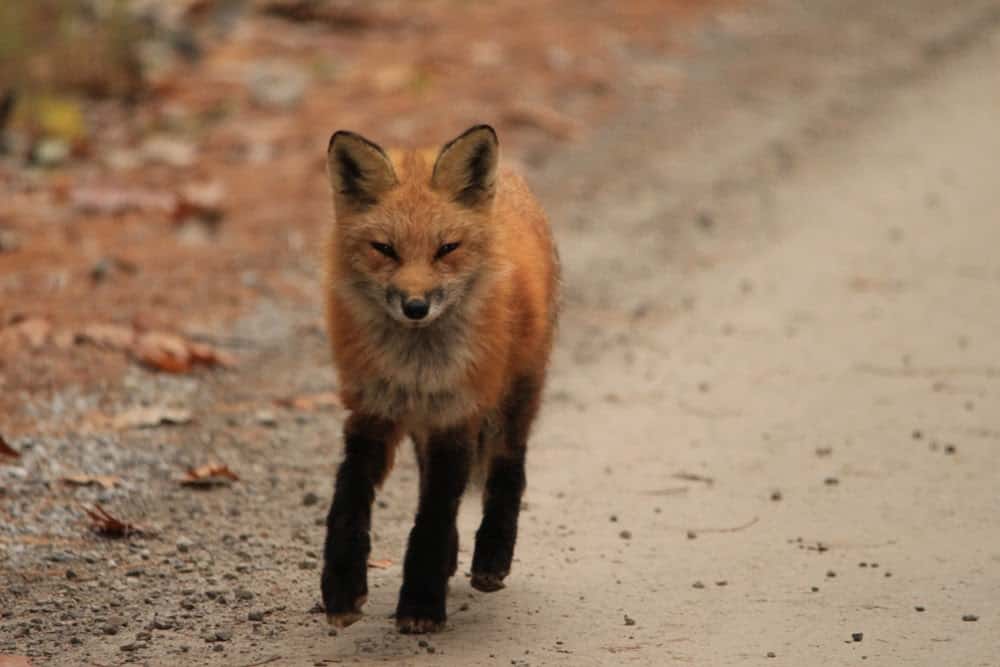
MARCH
- Bufflehead, goldeneye, and common merganser numbers increase on the Otonabee River, and the first hooded mergansers since December usually return.
- On mild afternoons along woodland trails, watch for snow fleas on the surface of the snow. Only about a millimetre in length, thousands can often be seen covering the snow like spilled pepper.
- By mid-March, the first northward-bound turkey vultures are usually seen. The first songbirds, too, usually return by mid-month. In the city, the most notable new arrivals are robins and grackles. In rural areas, watch for red-winged blackbirds perched high in wetland trees.
- Sandhill cranes return to the Kawarthas in late March and can sometimes be seen performing their courtship dance. It includes head bobbing, bowing, and leaping into the air. Douro Third Line is sometimes a good place to see these birds.
- The spring equinox occurs on March 20 as the sun shines directly on the equator. Both the moon and sun rise due east and set due west. For the next six months, we can enjoy days that are longer than nights.
CLIMATE CRISIS NEWS
To be inspired to take an active role in addressing the climate crisis, people need to feel a deep sense of alarm at how serious the situation is. However, we should also be encouraged by the many reasons for hope, hence these news items from both perspectives.
HOPE: More and more countries seem to be taking climate change seriously. The federal government has just announced a new plan to push Canada beyond its Paris commitment of reducing annual greenhouse gas emissions by 30 per cent below the level of 2005. “I think the big takeaway here is that, for the first time, Canada has a plan with policy action that is consistent with ambition,” said Dale Beugin, vice president of research and analysis at the Canadian Institute for Climate Choices. The editorial in the Globe and Mail on December 14 voiced full support for a more aggressively rising carbon tax – $15 per tonne each year between 2022 and 2030 – that is central to the plan, writing “The necessity of a serious carbon tax has long been clear. It is now poised to become a reality.” I think Canadians should take pride in what is clearly brave and ambitious climate policy. For more details, go to https://bit.ly/38e1hfU
ALARM: On December 7, European researchers announced that last month was the hottest November for the planet as a whole on record. The relentlessly warming climate proved too much even for any possible effects of cooler ocean temperatures in the tropical Pacific. Scientists with the Copernicus Climate Change Service said that global temperatures in November were 0.1 C above the previous record-warm Novembers of 2016 and 2019. Here in Peterborough, November was 3.1 C warmer than the 1971-2000 average for the month, making it the warmest November in at least the past ten years – and possibly ever.
To see a list of ways YOU can take action on addressing climate change, go to https://forourgrandchildren.ca/ and click on the ACTION button.
